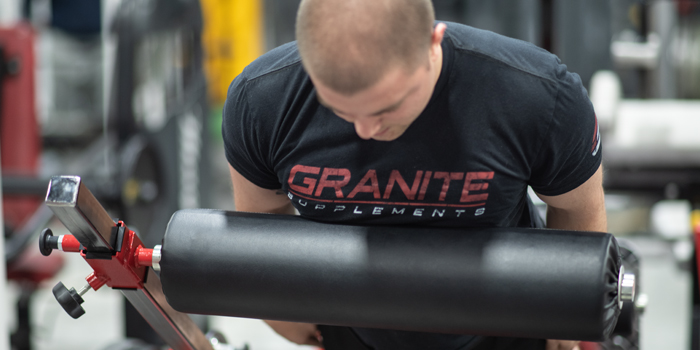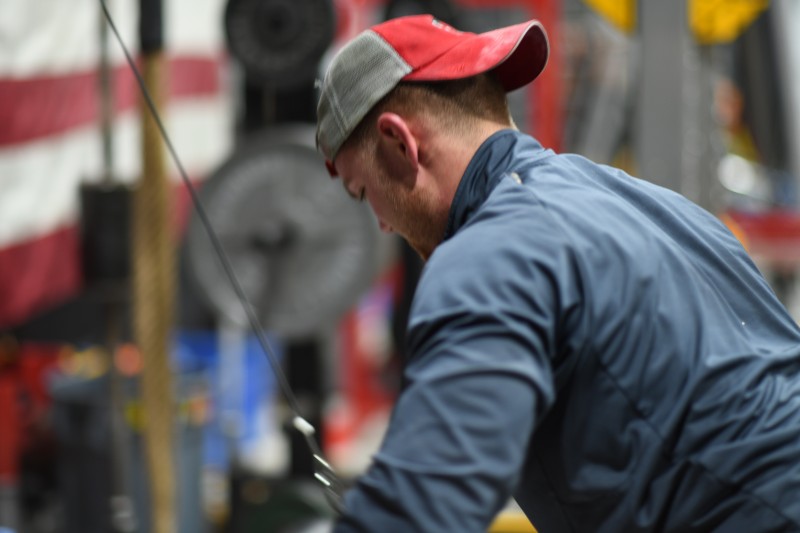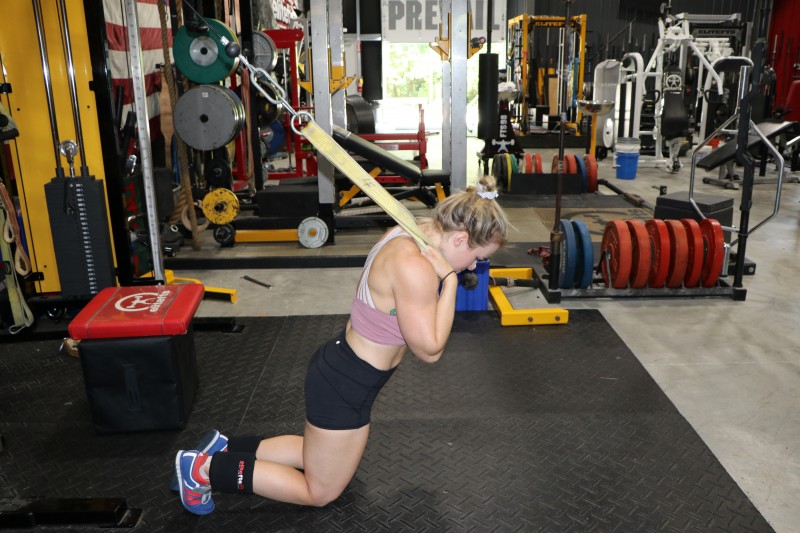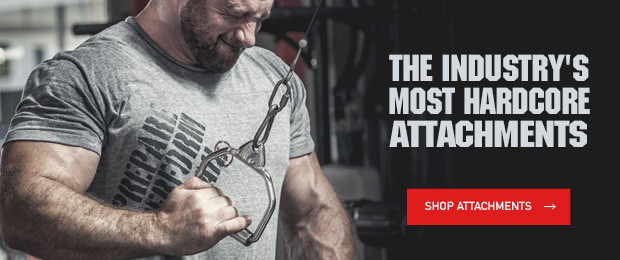
This is Part 3 of a series on my take on conjugate, Westside, concurrent, or whatever the heck everyone is calling it these days. What I am talking about is the four-day per week rotation consisting of two max effort days and two dynamic effort days developed and popularized by Louie Simmons. There are many articles on elitefts about this method. This is my interpretation, adaptation, and application of it.
- Part 1: 4 Max Effort Method Principles to Master
- Part 2: 5 Dynamic Effort Method Principles to Master
- Part 4: The Big Picture of Conjugate
Having already covered the max effort and dynamic effort methods, what is left is the glue that holds the conjugate system together: the repeated effort method. It's what you do when max effort and dynamic effort work is done. It's the accessories — the lifts that are going to fill in the gaps and build on top of the work you’ve just done.
When talking conjugate, accessory work is the least glamorous and the least discussed aspect. With that, it is where lifters using this system are missing out the most.
RECENT: 5 Dynamic Effort Method Principles to Master
Accessory work is what completes the method. On their own, max effort and dynamic effort days provide a tremendous level of neural stimulus, but they do not provide a whole lot of volume. The lack of main lift volume is often the biggest criticism of conjugate, but that is where the repetition method comes into play.
Week to week and month to month, the training volume from your main work is going to remain relatively consistent and relatively low. The accessory work is where you are going to really be able to add and manipulate your overall training volume.
The purpose of the max effort and dynamic effort methods isn’t stimulus through volume. The purpose of max effort and dynamic effort is to use high force production to better your ability to use the muscle you already have.
The repetition method, on the other hand, utilizes volume to promote the development of more muscle, as well as promoting a given muscle’s resiliency. More muscle will lead to more weight on the bar, and more durable muscle will prevent injury. The improvements you make with accessory work will drive the improvements you see on your dynamic effort work, max effort work, and, ultimately on the platform.
What accessory lifts should you be doing? How heavy should you be going? How much accessory volume should you be hitting?

Principle 1: Scale the Session
The max effort work and dynamic effort work are where most of your energy is going to be expended. You are going to need to choose accessory work in a manner that compliments where you will be in a training session.
Typically, the first accessory movement is going to be a compound lift trained fairly heavily. After that, move to smaller movements trained for higher reps. The smaller movements don’t require as much mental or physical energy, and you will be able to train them hard even in a fatigued state. One heavier accessory and between one to four lighter movements will usually do the trick.
Principle 2: Build the Main Lifts
You are building your main lifts with your accessory work. Your exercise selection should reflect that. What movement is going to improve your max effort lift? What movements will improve those? What movements are going to build your foundation?
Think of your max effort and dynamic effort work as the peak of a pyramid. The accessory work is going to make up each subsequent lower level of the pyramid. With that, place priority on the places where you need the most improvement.
Pick exercises that are going to address what you need. Prioritize what you select based on what you need the most. If your quads aren’t limiting your squat but your hamstrings are, you’d better be picking glute-ham raises over leg presses. If your shoulders are limiting your bench but your pecs aren’t, you’d better be picking front raises over chest flyes.
Principle 3: Be Like a Bodybuilder
If there is a place to train the muscle, not the movement, your accessory work is it, especially when you get to smaller isolation movements. If you are trying to build a weak point up, you want to make sure you are actually targeting the muscle you are aiming for. If you developed a weak point, your body doesn’t want to put the load there. If you are swinging weights around without purpose, you’ll be more than likely to recruit other muscles and miss hitting your weak point.
RELATED: What a Powerlifter Can Learn From an IFBB Pro
When you are doing the accessory work, think like a bodybuilder. Use precision. Focus on where you are putting the load and on how the rep feels. Feel each rep and feel what each rep is doing. Put emphasis on the area that needs it — and nowhere else.

Principle 4: Adjust Volume Accordingly
As I said above, accessory work is where you will really be able to manipulate your volume. How much you do is going to be heavily based on where you are at in a training cycle, how hard you are pushing things on your main lift, and how far along you are as a lifter. Furthermore, the goal with volume isn’t to get as much in as possible. It is to create the stimulus necessary to improve — nothing more.
The closer a lifter is to the meet or as a lifter gets stronger, the less accessory work they need. Why? A stronger lifter has weak points that need to be selectively prioritized and a finite ability to recover. As you get closer to the meet, the weights you are handling will be higher, and volume is going to need to be manipulated accordingly.
A newer lifter, on the other hand, doesn’t have specific weak points; they are just weak. A newer lifter simply needs to focus on building tissue, getting stronger, and building work capacity. Since the weights they are handling are much lighter, they won’t need to be nearly as concerned about what they can recover from.
Principle 5: Don’t Defeat the Purpose
The first thing to remember with accessory work is that its purpose is to build you up, not beat you up. You shouldn’t be selecting movements that hurt. You shouldn’t be selecting movements that are high risk. You shouldn’t be training with so much volume that you can’t move the next day.
If something hurts, don’t do it. If you need to train that body part, find an alternative movement. If you are too sore the next day, drop things back a bit. If your accessory work is beating you up, you’re just going to be digging yourself into a bigger hole.
In Conclusion
In conjugate, accessory work plays a huge role, even if it isn’t one that gets the attention. If all you train is the main lifts, you will develop holes and weak points. Accessory work is going to help fill your gaps and prevent you from developing new ones.
With accessory work, we are trying to bring up the areas that you need the most without putting you over the edge of what is recoverable. This will take an analytical eye and some experimentation, but the process is well worth it.
Seth Albersworth is a powerlifter with experience in and out of gear. His best totals are 2,000 pounds raw and 2,403 pounds multi-ply. Seth has completed his bachelor's degree in kinesiology from the University of Calgary and is currently studying to become a Doctor of Chiropractic at Palmer College of Chiropractic's Florida Campus.











2 Comments